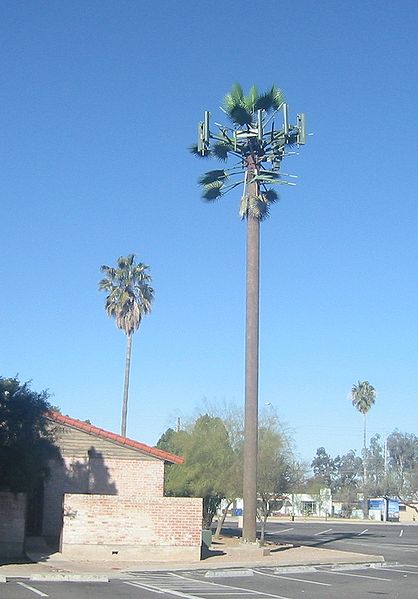The other night I watched what sounded like it would be an unbelievably boring episode of Frontline, on the subject of cell phone towers. In fact it was riveting, and disturbing. The next morning I read Laura Miller’s review of a new book called Tubes: A Journey To The Center of the Internet, by Andrew Blum. That may also sound dull, but it, too, was an eye-opener. Taken together, they've made me reconsider the physical infrasture of "the cloud."
“Part of the utopian romance of the Internet,” Miller writes, “is that it has no weight, no friction, no footprint, no smell. The buzzword of the moment — ‘cloud’ — promises ethereality, pure information, a dream with almost supernatural intimations.” The digital delights we access from computer and smartphone and tablet screens is “weirdly immaterial,” as she puts it, and in fact immateriality is one of those delights: it frees us from the smudgy daily paper and bulky boxes of albums and the sprawly local mall. It certainly looks and feels like an obliterator of all things physical.

A Facebook server farm, photograph by Martin Schoeller for Time.
Obviously I haven’t read Blum’s book (I just read the review!) but Miller’s summary and quotes from it sound promising. Evidently he was not always welcome at, say, any given Google data center. But shouldn’t these places be made a bit more un-alien, given that they form the material infrastructure behind our virtual lives? “This is the cloud,” one data-center guide told Blum. “All those buildings like this around planet create the cloud. The cloud is a building.”
The Frontline piece, reported with ProPublica, is titled “Cell Tower Deaths,” and it’s not about what cell phone towers look like, per se, but their physicality central to the story. The towers are hundreds, sometimes a thousand, feet tall. We see them throughout the segment: slender, jutting structures, they’re impressive in their way: skeletal lattices of steel topped by a metal-mesh platform with a small trapdoor. Not much room to do more than stand, and fiddle with the thick wires and gadgetry.
Their assembly and maintenance is dangerous work that “attracts a certain kind of worker,” the Frontline correspondent tells us, and what this seems to mean is a mixture of economic marginality and youthful guts. One haunting anecdote involves a new father who decided he needed to find something better than the moving-man gigs and pizza delivery work he’d been doing, and was pleased to get a $10-an-hour job with no prior experience; reportedly horsing around high on a tower, he fell to his death. Nearly 100 climbers have died since past 2003, which perhaps doesn’t sound like much, but according to Frontline it’s about 10 times the death rate of construction workers.
Like server farms, these towers aren’t really designed to be seen; but unlike server farms, they’re all over the place: according to trade association CTIA, the number of U.S. “cell sites” was 30,000 in 1996, 127,000 in 2001, and 283,000 in 2011. Gotreception tells me there are several such sites within walking distance of my house. In urban areas, a “site” may not be a tower (it could be something on top of a building), and Wikipedia’s “Cell Site” entry makes mention of efforts to “camouflage” smaller towers in some cities.

Camouflaged cell site, via Wikipedia
A camouflaged tower strikes me as a great metaphor. Even plain-sight towers are a classic example of an element of the built environment that most of us never really see, even when they enter our field of vision: it's just some industrial/infrastructure thing, visual static, we look right through it. And that’s echoed, it turns out, in the business arrangements that call them into existence: “a complex web of subcontracting,” Frontline reports, effectively insulates the brand names you and I know from the gritty and unpleasant business of constructing these stealthy monuments. The show ended by noting that the new buildup to accommodate the next-generation network that delivering even bigger packets of information to our devices. Something for us to remember next time we’re cursing a carrier about a dropped call or a stalled video, or some other moment that finds us cut off from that ethereal-seeming, but surprisingly physical, cloud.


Comments [2]
Mighty mighty, just lettin' it all hang out
We may have our heads in the clouds when we contemplate the center of the Internet, but in Google’s case, “She’s a brick — house.”
http://www.wired.com/epicenter/2010/12/google-nyc/
Also if you have not read Tubes listen to Andrew’s interview on npr.
http://www.npr.org/2012/05/31/153701673/the-internet-a-series-of-tubes-and-then-some
I would love to read your take on Andrew’s book.
Thank you.
06.03.12
10:54
Commodores references always appreciated.
06.08.12
07:27